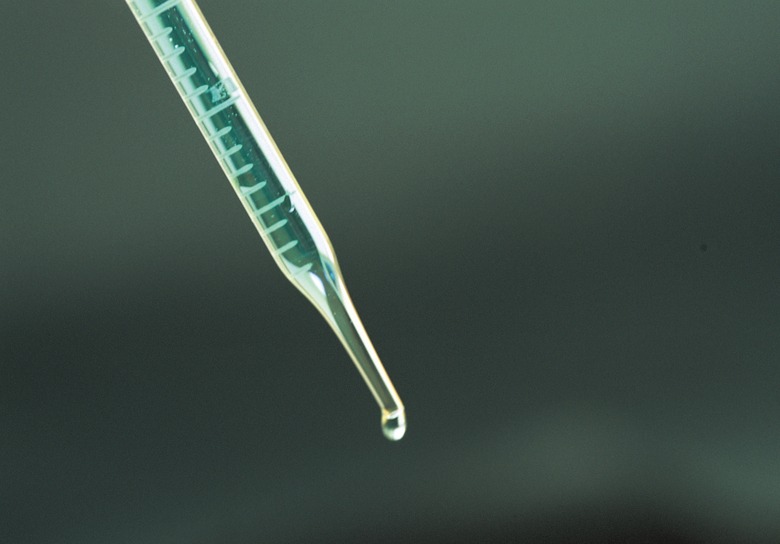Safety Precautions For Using A Pipette
The pipette (sometimes spelled pipet) is a useful piece of glassware still employed by many chemists. The function of a pipette is to use suction to draw up a set volume of liquid to allow it to be transferred to another container. Two main types of pipettes are used; some are simple calibrated glass tubes that require manual suction whereas others have built-in mechanical devices that allow the user to draw up set amounts by using a plunger.
Mouth Pipetting
Mouth Pipetting
The basic glass pipette requires applied suction to draw up a solution. In the not too distant past, chemists commonly used the pipette like a straw; putting their mouth on the open upper end and using lung power to suck up the solution at the other end, which is now considered a definite safety hazard and should never be done. The danger is that you can misjudge the amount and draw up hazardous liquids into your mouth. Even if you don't draw up the liquid, you can still inhale potentially harmful fumes.
Broken Glass
Broken Glass
To work a glass pipette, you use a suction bulb to produce draw inside the tube. Some bulbs require you to push the pipette into a tight-fitting hole in the base of the bulb. Since pipettes are glass, you can snap the pipette in two as you force it into the bulb and subsequently drive the broken portion into your hand. Use great care when inserting a pipette into a bulb. If possible, use a suction device where the pipette rests up against it to seal rather than being fully inserted.
Overfilled Pipettes
Overfilled Pipettes
When using a bulb to produce suction, the chemist first squeezes the bulb to force out air and create a vacuum and then uses that vacuum to draw up liquid. A lack of attention can cause the user to draw up too much liquid, in which case it will flow up into the bulb. This results in liquid being spilled when the bulb is removed from the pipette, which can be dangerous if the liquid is hazardous, such as an acid. Use care never to overfill the pipette.
Repetitive Strain
Repetitive Strain
Newer pipettes used for repeated transfers, typically of small amounts, often incorporate mechanical tools such as wheels, dials or plungers to force the liquid up into the tube, and then to dispense it. If you use these devices for prolonged periods, you may be at risk for repetitive strain injuries, such as carpal tunnel syndrome. Use proper ergonomics, follow the manufacturer's instructions and take breaks where possible. (ref 2)
Cite This Article
MLA
Judge, Michael. "Safety Precautions For Using A Pipette" sciencing.com, https://www.sciencing.com/safety-precautions-using-pipette-8743742/. 24 April 2017.
APA
Judge, Michael. (2017, April 24). Safety Precautions For Using A Pipette. sciencing.com. Retrieved from https://www.sciencing.com/safety-precautions-using-pipette-8743742/
Chicago
Judge, Michael. Safety Precautions For Using A Pipette last modified August 30, 2022. https://www.sciencing.com/safety-precautions-using-pipette-8743742/
